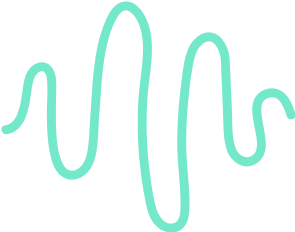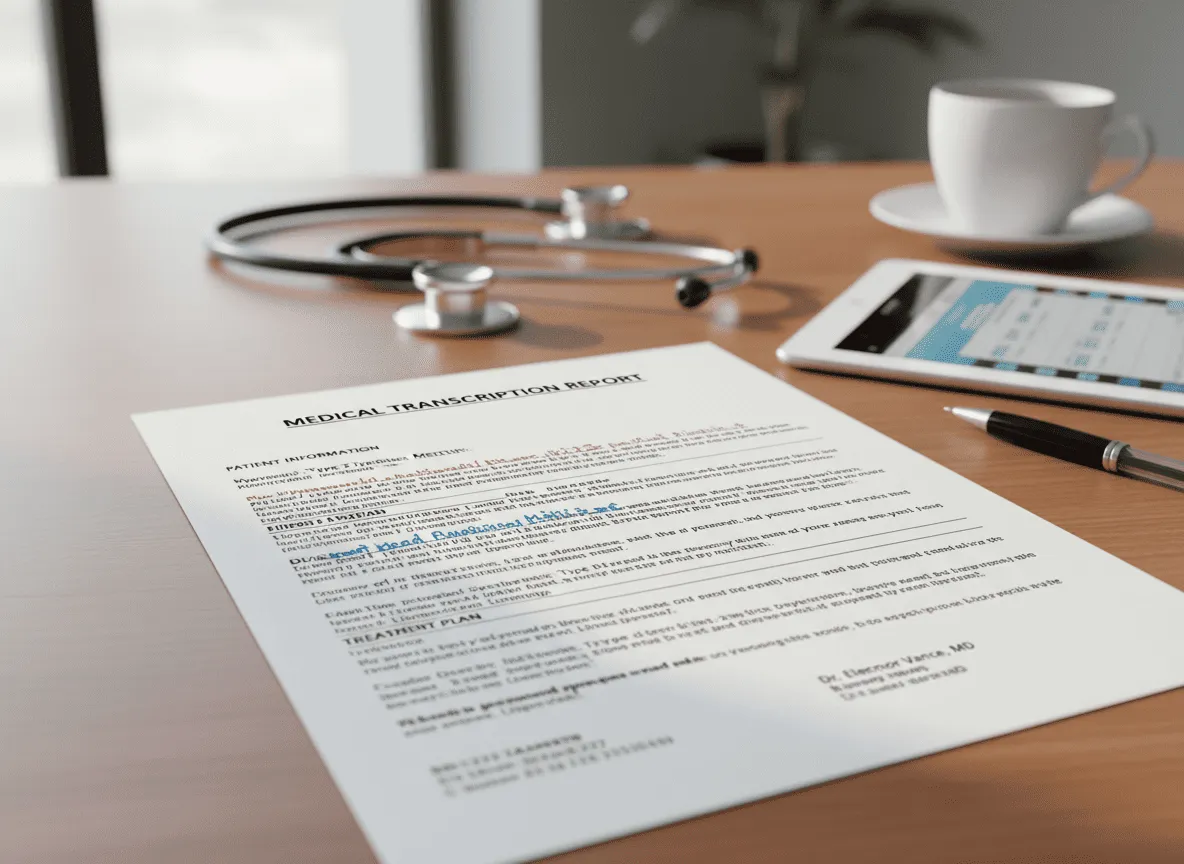Interview Transcript : how to generate and structure it

Research Interviews Made Easy
Interview transcription, question trackers, structured reports, and more
As a researcher or business analyst, you don't want to spend countless hours transcribing interviews manually.
You want to spend it actually analyzing the insights from these interviews.
Here's a guide to speed up how you do transcripts and reports from all your interviews.
What are the Different Types of Interview Transcripts?

For every way you want to leverage the data from your interviews, there is a transcript format that works for you :
1. Verbatim Transcription
In verbatim transcription, every word spoken in the interview is captured exactly as it is. This includes filler words like "um" and "uh," as well as pauses, laughter, and other background noises.
You might use verbatim transcription for legal cases, psychological studies, or research where every detail is critical.
2. Intelligent Verbatim Transcription
Intelligent verbatim transcription, or clean verbatim, removes non-essential sounds and filler words while keeping the main content intact. This makes the transcript easier to read without losing the context of the conversation.
It's useful for preparing documents for legal purposes, media publications, and other scenarios where clarity is important but the exact replication of every sound isn't necessary.
3. Edited Transcription
Edited transcription takes it a step further by correcting grammatical errors and refining the language used. This type of transcription is perfect for creating professional documents like articles, reports, and marketing materials.
It ensures that the final transcript is clear and polished, which makes it fit for public distribution and formal presentations.
4. Phonetic Transcription
Phonetic transcription focuses on how words are pronounced, using phonetic symbols to represent the sounds. This method is essential in fields like speech therapy and linguistic research, where understanding pronunciation patterns is crucial.
It helps you analyze accents, speech disorders, and other linguistic features by providing a detailed record of how words are spoken.
Example of a Well-Structured Interview Transcript

When it comes to leveraging transcripts in your research or analysis project, you better want to opt for a structured format. In a format like this :
1. Introduction
Start with a brief introduction that includes the names of the interviewer and interviewee, the date, and the location of the interview. This context helps anyone reading the transcript understand the setting and participants involved. For example:
Interviewer: John Smith
Interviewee: Jane Doe
Date: July 24, 2024
Location: Noota Inc. Office
2. Speaker Labels
Clearly identify who is speaking at each turn. Use full names initially and then switch to initials to maintain readability. For instance:
John Smith (JS): Can you tell me about your role at Noota?
Jane Doe (JD): Sure, I am the project manager overseeing AI development.
3. Timestamps
Include timestamps for each points in the conversation. This helps locate specific parts of the interview quickly, especially useful for long recordings. Example:
[00:05:00]
JS: What are the key challenges you face in your role?
JD: One of the main challenges is integrating new AI technologies with our existing systems.
4. Clarity and Formatting
Use proper punctuation and clear paragraphing. Avoid large blocks of text and break up the dialogue into manageable chunks. Example:
JS: How do you approach problem-solving within your team?
JD: We use a collaborative approach. Everyone’s input is valued, and we often brainstorm solutions together.
5. Including Key Information
Besides the dialogue, make sure to include any relevant background information, non-verbal cues, or important context that was mentioned during the interview. This adds depth and understanding to the transcript. Example:
JS: Can you describe a recent project?
JD: (laughs) There are so many! One recent project involved...
Why You Shouldn't Transcribe or Structure Manually

Manual transcription and editing is a time-consuming and error-prone process. If you're still transcribing interviews by hand, it's time to reconsider.
Here’s why you should ditch manual transcription and opt for a transcription software :
- Time-Consuming : Manual transcription takes an enormous amount of time. Listening to an hour-long interview can take up to six hours to transcribe accurately. This doesn't include the time spent editing and proofreading.
- Prone to Errors : When you transcribe manually, the risk of errors increases significantly. Typographical errors, missed words, and misinterpretations are common. These mistakes can lead to misunderstandings and inaccuracies in your records.
- Physical Strain : Manual transcription can be physically demanding. Typing for long hours can lead to strain injuries, such as carpal tunnel syndrome. Eye strain and back pain are also common issues.
What You Should Look for in Transcription Software

Choosing the right transcription software is crucial. Not all tools are created equal, and selecting the wrong one can lead to frustration and wasted time. Here’s what you should prioritize when evaluating transcription software.
1. Accuracy
Your software must handle the specific language and dialect accurately. Look for tools that use advanced AI and machine learning to improve transcription quality.
2. Multiple Speaker Identification
In interviews, especially with more than one participant, distinguishing between speakers is essential. Your transcription software should accurately identify and label different speakers.
3. Structured Transcripts
A well-structured transcript is easier to read and analyze. The software should provide features like automatic timestamping, speaker labels, and clear formatting options. It should also allow to customize the format of your transcript to meet your needs.
4. AI Report
Your software might also enable you to generate AI-based reports or minutes. This can help you make analysis and find insights faster.
5. Security and Confidentiality
Security is non-negotiable, especially if your interviews contain sensitive information. Ensure the software uses encryption and secure storage to protect your data. Compliance with legal and ethical standards for data protection is also critical.
Interview Transcription and Report Generator: Noota

If you’re looking for a comprehensive solution for interview transcription and report generation, Noota is the answer. This tool streamlines the entire process, ensuring accuracy, efficiency, and ease of use. Here’s why Noota stands out.
- Accurate Recording and Custom Transcript : Forget about frantic note-taking during interviews. Noota records and transcribes your interviews in real-time, capturing every word with high accuracy. The software’s advanced AI ensures that multiple speakers are correctly identified and labeled.
- Customizable Reports : Noota goes beyond just transcription. It generates AI-powered reports and summaries that you can customize to match the type of meeting or interview. Whether it’s a project update, a financial review, or research documentation, Noota’s flexibility ensures that your reports are well-structured and tailored to your requirements.
- Enhanced Data Security : Noota prioritizes the security and confidentiality of your data. It uses encryption and secure storage methods to protect sensitive information. This compliance with legal and ethical standards ensures that your interview data remains safe and confidential. Trust in Noota’s robust security measures to handle your data with the utmost care and professionalism.
You want to speed up your research and analysis work ? Try Noota for free.
Research Interviews Made Easy
Interview transcription, question trackers, structured reports, and more
Related articles

Forget note-taking and
try Noota now
FAQ
In the first case, you can directly activate recording as soon as you join a videoconference.
In the second case, you can add a bot to your videoconference, which will record everything.
Noota also enables you to translate your files into over 30 languages.

.svg)
.svg)
.webp)

.png)


.svg)
